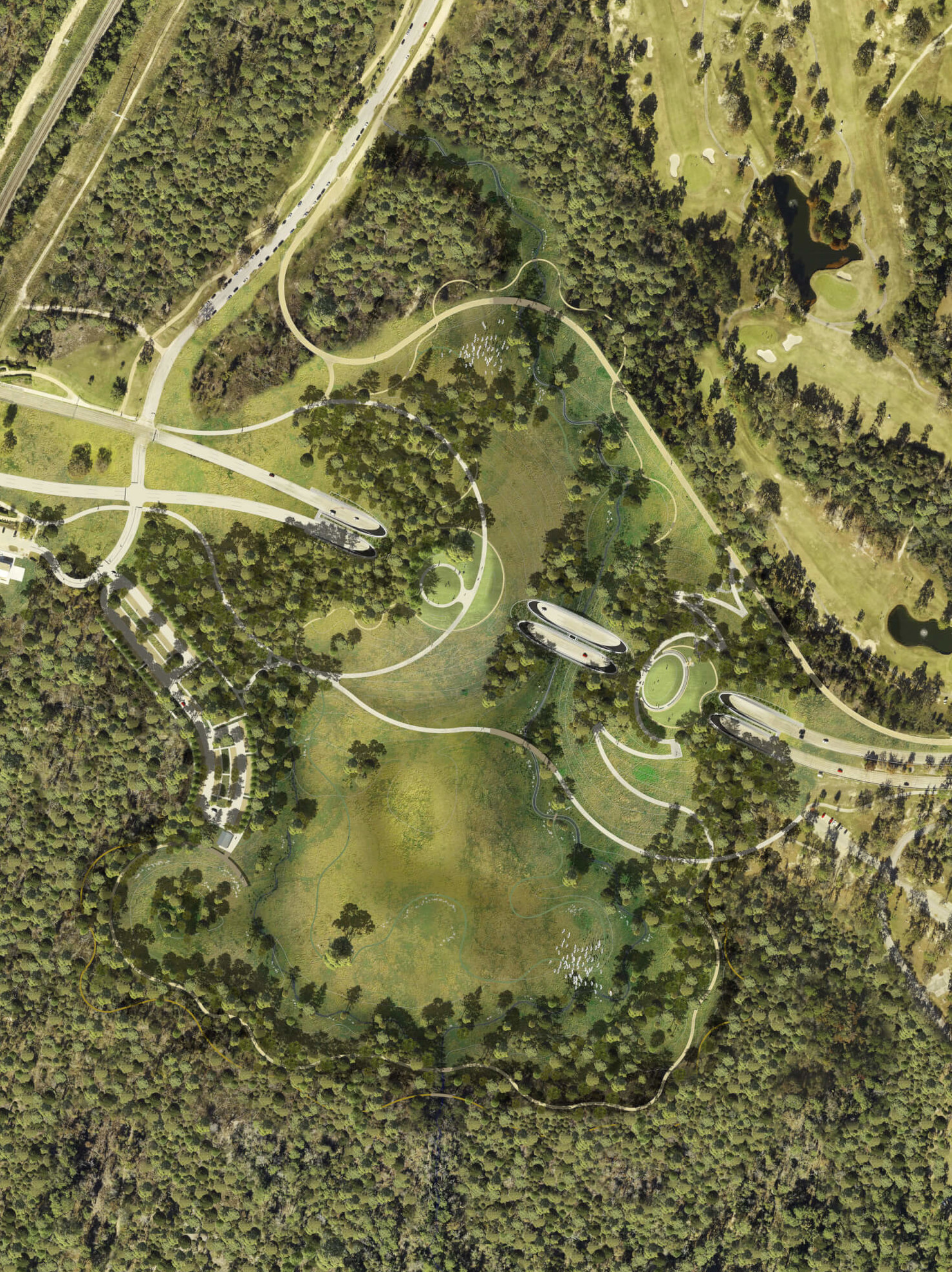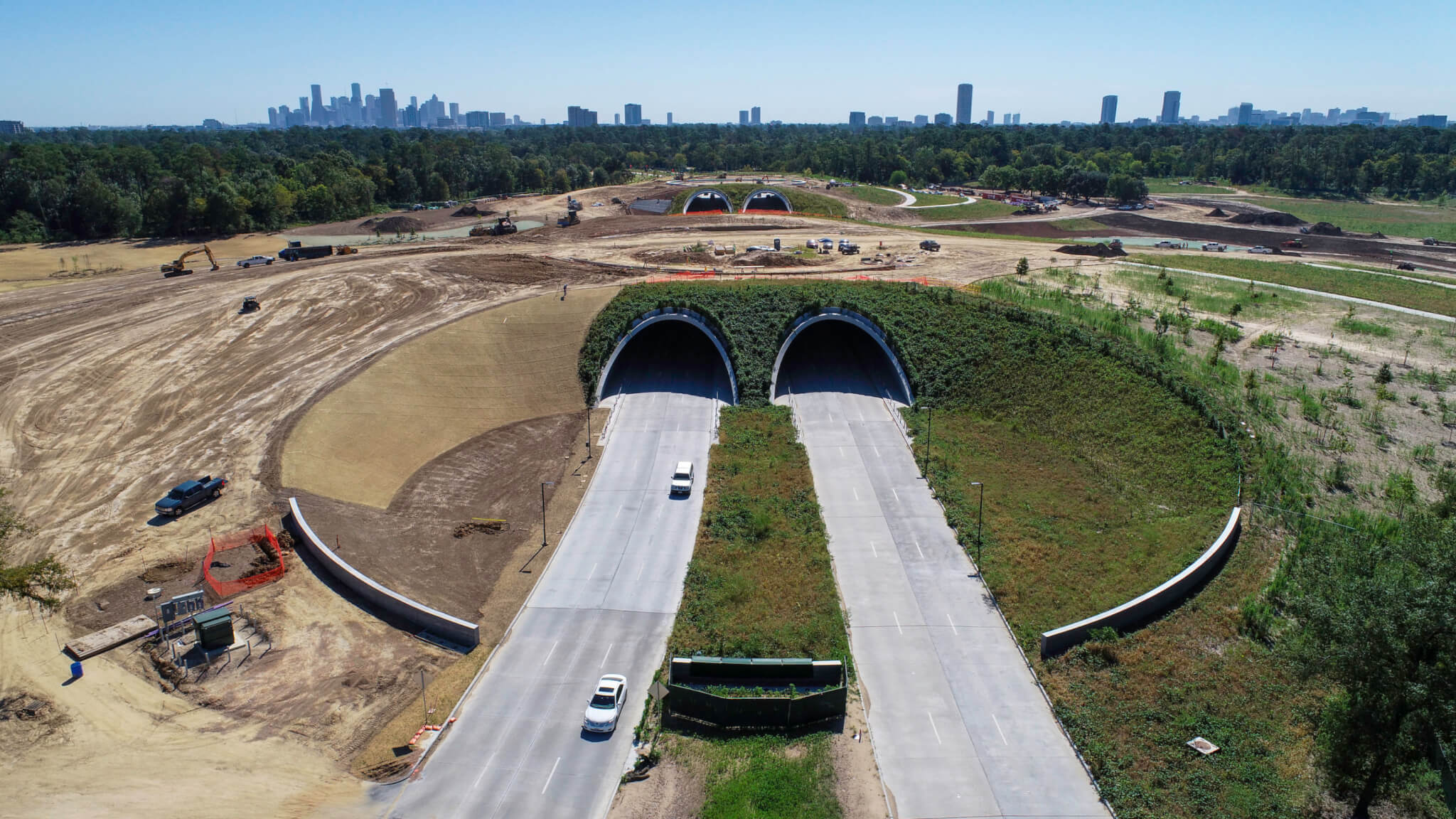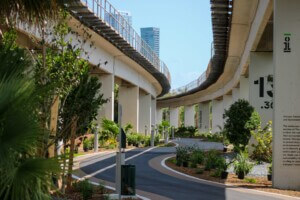The following editorial from Thomas Woltz advances the responsibility of landscape architects to create a cleaner, greener, and more equitable future as urban populations swell and the impacts of climate change put current defenses to the test. This alliance with infrastructure serves as a fitting lead-off for the Focus section of the October/November edition of The Architect’s Newspaper themed on landscape. Along with a review of Kevin Loughran’s Parks for Profit: Selling Nature in the City and a fabric-focused Pictorial, this section showcases a quartet of city-bound projects—three in the San Francisco Bay Area and one in the heart of Manhattan—that, while diverse in scale and scope, bring resiliency, biodiversity, and natural beauty to the forefront. Keep an eye out for these pieces in the coming days. —The Editors
The upcoming need for infrastructural investment in the United States is an extraordinary opportunity for the community of landscape practitioners. There is powerful potential in the alignment of infrastructural needs with the design community’s tools to creatively address some of the most pernicious issues facing our society today, including an interrelated set of social, cultural, and environmental crises. The rapid decline in biodiversity, increase in climate extremes, and social disenfranchisement of minority communities, coupled with failing infrastructure, are urgent issues that should be front of mind in reimagining the critical networks of our world and our nation. The best solutions will be found within innovative collaborations across disciplines that align the engineered, ecological, cultural, and social.
In recent years, landscape architects have delivered compelling projects that punch above the typical response of engineered solutions by utilizing multidisciplinary design approaches with multivalent goals. Rather than simply capping an interstate, OJB established a thriving public landscape in a dense urban area of Dallas. Field Operations’ Tunnel Tops projects in San Francisco’s Presidio, which opened this year, yield a substantial link between the Drill Field of the Presidio and Crissy Field Park by Hargreaves Associates along the shore, designed in 1990. These projects reimagine transportation infrastructure to deliver generous urban experiences that encourage new forms of community, gathering, and celebration.
Too often parks are seen as empty land, “green space,” a tabula rasa, ripe for development rather than recognized as essential contributors to urban life. Memorial Park, Houston’s largest park, consists of 1,500 acres of forest, river, and prairie, much of which was once inaccessible to the public, owing to nearly a century of neglect and lack of investment. During World War I, the site was Camp Logan, a training ground for soldiers preparing for battle. (The race relations of the era heightened tensions between Black soldiers and white local police officers, culminating in a riot in 1917.) At the end of the war, a prominent Houston family suggested that the camp become a public landscape, envisioning it as a memorial to the soldiers who trained there. Without a plan, however, it was treated as a wilderness park, untended, with athletic facilities scattered haphazardly across its expanse. In the 1950s, an ill-conceived infrastructure project split the poorly tended park in two when six lanes of roadway were built.

In 2012, after four years of severe drought, the park faced another devastating blow: Up to 80 percent of the forest canopy died, providing the wake-up call the city needed to rebuild its largest public landscape. Nelson Byrd Woltz Landscape Architects was hired in 2013—and after two years of community input and design work, the firm presented a comprehensive vision for the next 20 years of enhancing the park’s current assets; creating new public destinations; and addressing major infrastructural needs of parking, water quality, stormwater management, resiliency, biodiversity, and connectivity.
A collaborative design approach in an urban landscape of 1,500 acres can address environmental infrastructure at scale and in layered and powerful ways. Goals for Memorial Park included cleaning stormwater, storing water for irrigation, mitigating flood damage, restoring biodiverse native prairie and forest communities, re-establishing wildlife connectivity, and reducing the heat island effect. Of equal importance, but perhaps less evident, is the stewardship of cultural landscape resources alongside the ecological assets, revealing the stories of the peoples who have occupied and used this land over centuries. From the Karankawa people, Spanish settlers, and westward expansion to World War I and the modern day, the design of each project within the park entwines ecological and cultural revelation with the human experience of the landscape.

Opened to the public in 2021, the Eastern Glades, a 100-acre section of the park, combine sustainable parking design, stormwater mitigation, wetland conservation, and forest restoration with new amenities for park users. A newly constructed five-and-a-half-acre lake captures and treats stormwater and in the process offsets millions of gallons of potable water to address the irrigation needs for large areas of the park. Architectural interventions of gates, piers, pavilions, and terraces offer clues that acknowledge the military history of the site, and extensive trails engage visitors in the diverse restored ecosystems and cultural landscapes. These new amenities demonstrate the successful integration of sustainable initiatives without renouncing the consideration of the human experience in large-scale infrastructure.
Perhaps the most ambitious project from the comprehensive plan for Memorial Park is the highly complex 100-acre Land Bridge and Prairie Project, which will open to the public in December. This infrastructure project builds on the precedents of Dallas’s Klyde Warren Park and the Presidio Tunnel Tops to deliver a multilayered landscape of green infrastructure, stormwater management, and human and wildlife connectivity. Four tunnels made of high-performance concrete shells accommodate traffic while supporting two earthen plateaus, rising to about 35 feet above grade, that offer sweeping views of the Houston downtown and uptown skylines. On the Western Mound, interventions at ground level reveal information about the surrounding native ecosystems as they carry visitors to these vantage points, and at the top, nearly 1,000 linear feet of benches foster impromptu public performance and interaction, while designed elements reveal solar alignments during the equinoxes and solstices.
Ecologically, the project establishes nine acres of native savanna and 45 acres of Gulf Coast prairie that filter stormwater before slowly releasing it into Buffalo Bayou. Under the direction of the Memorial Park Conservancy, native seeds from local prairie fragments were collected and cultivated over the past four years to be used in the project, making this an extraordinary precedent of urban prairie restoration. Throughout this infrastructure project, the human experience is enriched through carefully presented details about the history and ecology of the site, through newfound vistas across the land, and through meaningful immersive experiences in native Texan ecologies.
The potential for this level of positive impact on biodiversity and the human experience lies latent in every major infrastructure engineering project of the day. It is paramount that the landscape and architecture design communities lead the way in rethinking our urban systems. The tools of design are powerful. If they are wisely applied, we can put the “public” back into “public works.”
Thomas Woltz is principal of Nelson Byrd Woltz Landscape Architects.











